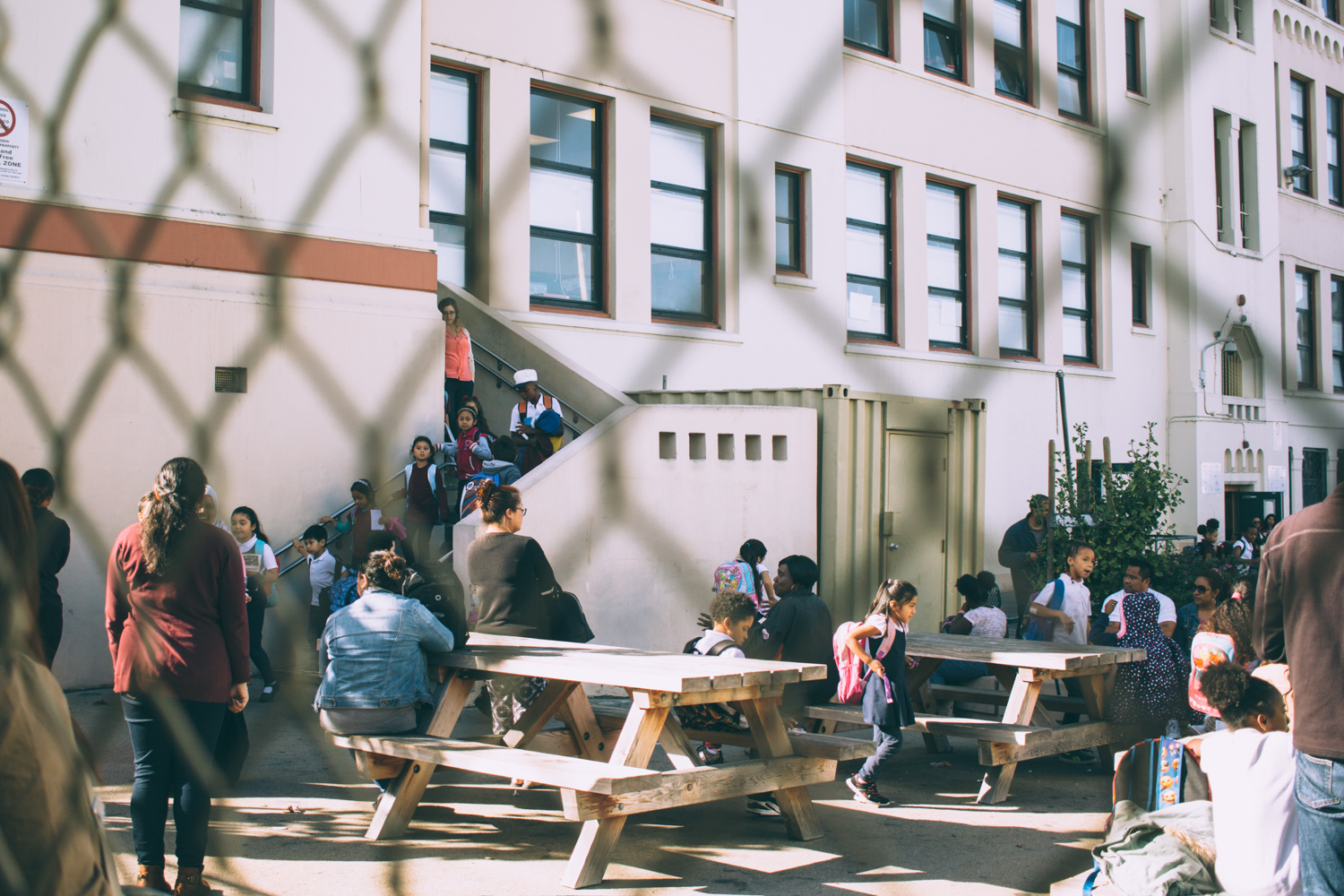Over the past 13 years, San Francisco Unified School District has raised and spent more than $1 billion in taxpayer dollars on school construction and improvements.
This was made possible by a bond program that has raised money at an accelerating rate, and that the district has come to lean on as a regular approach to financing structural improvements. This year’s $744 million bond measure, Proposition A, is the fourth and largest in that program, which began in 2003.
But it will not be the last, thanks to aging buildings, a need to keep up with new technology and projected growth in the student population.
“It’s like painting the Golden Gate Bridge,” said David Goldin, chief facilities director and manager of the bond program. “It goes on and on.”
Rather than ask for a clean $1 billion outright, Goldin said, the Board of Education decided to put a “more palatable” proposal before voters. The measure needs 55 percent approval.
Regardless of the outcome, district officials expect they will have to return to voters for more funding soon.
“If this fails, we’ll go back to the drawing board and go back out two years from now,” Goldin said. “Even if this passes, we will likely ask for at least $500 million around 2022.”
‘You don’t ask for what you don’t need’
The Board of Education has mapped out a spending plan, though those targets could shift if Proposition A passes. So far, $409.2 million is slated to pay for construction, modernization and seismic upgrades at 45 schools. Also, $100 million would go toward new technology, such as wireless tablets for students, which would require installing high-speed Wi-Fi everywhere. The rest of the money would be used for a new arts center, new schools, food programs, schoolyard improvements and developing affordable housing for teachers.
“These are the current needs. It’s like your house; you don’t ask for what you don’t need,” said Andrea Dawson, senior project manager for the bond program.
 If passed, Proposition A would prioritize building a new school in the Mission Bay neighborhood, and depending on the cost of that project possibly another one in Hunter’s Point-Bayview. Improvements projects would vary based on each school’s need. A.P. Giannini Middle School would get new locker rooms and a gymnasium.
If passed, Proposition A would prioritize building a new school in the Mission Bay neighborhood, and depending on the cost of that project possibly another one in Hunter’s Point-Bayview. Improvements projects would vary based on each school’s need. A.P. Giannini Middle School would get new locker rooms and a gymnasium.
Since 2003, the district has passed a series of bonds that have together raised $1.3 billion, and almost all that money has gone toward construction, upgrades and improving accessibility at 90 of the district’s schools. The first measure was for $295 million; the second, in 2006, was for $450 million; and the third, in 2011, was for $531 million.
Dawson said that before those bonds passed, “the district limped along.”
“We always say, San Francisco public schools wouldn’t look the way they do if it weren’t for the generous taxpayers of San Francisco,” she said.
The district’s sheer size is what makes it so expensive to maintain, said Board of Education President Matt Haney, who is running for re-election.
“As a major urban district, we have many school buildings, which is why we are required to come back on a regular, staggered basis to meet the needs of buildings and students,” Haney said. “Smaller districts might not have to come back as often.”
San Francisco is the fifth-largest school district in the state, with 58,865 students, based on 2015-2016 enrollment data. By the year 2023, the student body is projected to grow 12-21 percent.
District depends on perpetual bond funding
San Francisco’s aging buildings are in need of continual reinvestment, district officials say. The bond revenue has become a regular mechanism for fundraising, partially to make up for the costs associated with decades-old lapses and controversies.
A third of the district’s buildings were built between 1910, after the Great Earthquake, and 1930; another third were constructed in the 1940s and ’50s, and the remaining third went up from the ’60s until now. The oldest building, the former I.M. Scott school on Tennessee Street in Dog Patch, dates to around 1885.
Back in the late 1980s, the city’s public schools were in bad shape. There were bathrooms without doors, lead-based paint was peeling off the walls and improvement projects had been abandoned.
City Hall stepped in to help, passing three bond measures that raised about $300 million for the district between 1988 and 1997.
But that money was only enough to begin improvements. And it was later discovered in an investigation by the San Francisco Chronicle that tens of millions in bond revenue had been diverted from rehabilitation efforts, instead going toward administrators’ salaries, which is illegal under state law.
The district needed money badly and had lost the trust of taxpayers. In 2000, Superintendent Arlene Ackerman ordered an audit of the facilities department, and found that the district lacked basic financial controls to prevent fraud. The accounting firm recommended a halt to all spending on facilities.
As schools continued to fall apart, Ackerman put off bond measure requests for three years while creating new oversight to bring order to the facilities department. Solutions included a bond oversight committee and annual audits.
The efforts satisfied the public. When the district proposed its own $295 million bond measure in 2003, rather than taking a cut from one of City Hall’s bonds, almost 71 percent of voters approved.
Millions rerouted to fix accessibility code violations
But before the district could breathe a sigh of relief, a 2004 lawsuit settlement over the Americans With Disabilities Act rerouted new money to fix more than 50,000 accessibility code violations at schools across the city. That mandated work took a big gouge out of the $295 million, setting back the district’s plans.
Ultimately, resolving the ADA violations would also soak up money from future bonds, kicking district-wide upgrades further down the road. Funding continued into the 2011 bond. The final tab: $250 million.
The city has over 20 years to pay back the bonds once they are issued in fiscal year 2017-2018. The city controller estimates that if Proposition A is approved, property taxes would rise by varying amounts every year, averaging $15.90 per $100,000 of assessed property value. That’s about $161 a year for a $1.1 million home, which is the average price of a San Francisco home, according to the real estate site Zillow.
If the past is an indication, voters appear likely support Proposition A. Like the 2003 bond, the 2006 and 2011 measures passed by wide margins — 74 percent and 71 percent, respectively.
If Proposition A does not pass, “a lot of critically needed work won’t get done,” Goldin said. “There will be huge scrambling to get up-to-date technology for learning. We won’t be able to fix cafeterias, replace fire alarms, security systems — all very important work.”
Update 11/7/16: This article was updated to reflect the age range of the school district's buildings.







